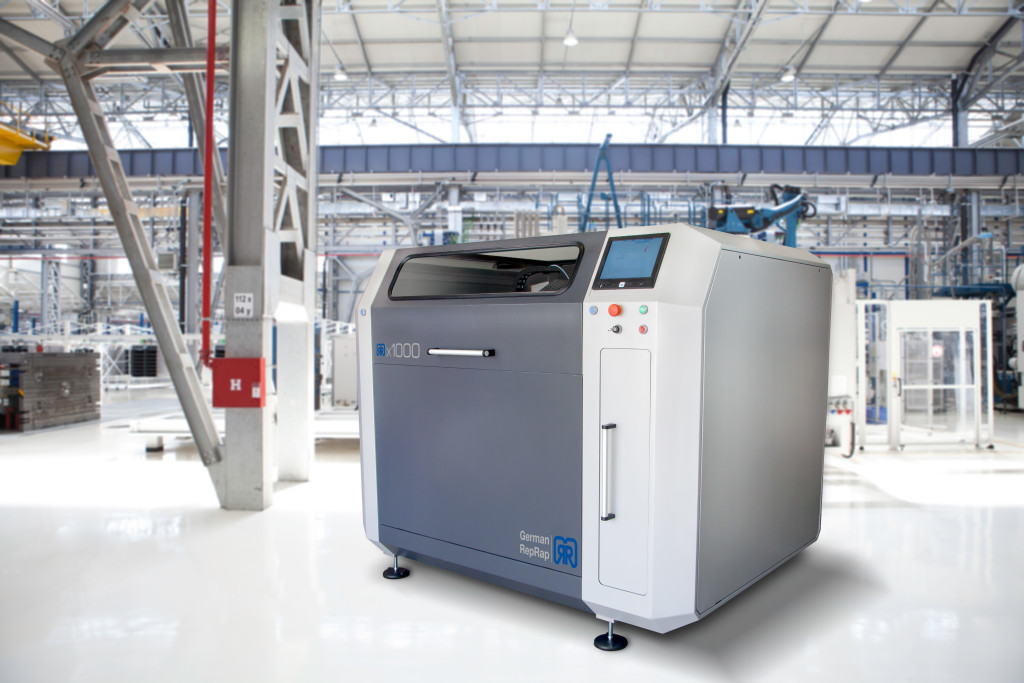German RepRap Releases 3D Printer X1000 V2, Providing Massive Build Space for Industrial Use
Founded in 2010, German RepRap ,the Munich-based manufacturer ,specializes not only in making and distributing 3D printers but also develops other solutions such as 3D printing software, scanners, filament, and peripheral accessories. Their client base consists of industrial corporations and businesses, designers, architects, schools, and far more–with a focus on product development and prototyping, as well as mold and model making.
Now, German RepRap’s new, massive 3D printer has a whole host of enhancements (since it was debuted at Euromold) and features that are built to accompany a machine meant for industrial aptitude. It also bears an addendum to its name, as it is now known as the X1000 V2.
With a heated bed and a build envelope of 1000 x 800 x 600 mm, the X1000 V2 is network compatible through an online connection and is accompanied by Simplify3D print software. It also features the Direct Drive DD3 extruder (dual extruder option available), complete with full metal hot end that allows variable contact pressure and uses nozzles with openings of 0.4 to 1mm. Detailed objects are possible with .1 mm layer thickness, but the company points out that this would take longer when users are attempting to 3D print larger parts.
New features have been added for ease in the process of printing also, with a two-point sensor management system for filament that decreases errors in operation, as well as allowing for the user to hit the pause button and change filament. The X1000 V2, with an open architecture, is able to use non-proprietary 3D printing filament as well as PLA, Performance PLA, Laywood, and PVA support material.
Meant to handle the growing need for 3D printing of larger components, and often several parts at once, the X1000 V2 has also been designed to meet an array of considerations regarding safety and performance. This 3D printer’s build envelope closes for safety purposes on operating and also eliminates any chance of air flow or currents interfering with the process. Not only that, there is an optional safety mechanism available for customers who also prefer a fire extinguishing system, with an automatic two-fold CO2 system which the team recommends for flexibility in location and installation of the 3D printer.

